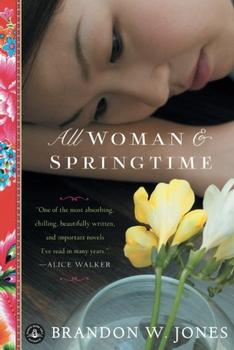Book Club Discussion Questions
In a book club? Subscribe to our Book Club Newsletter and get our best book club books of 2025!
For supplemental discussion material see our Beyond the Book article, Human Trafficking in North Korea and our BookBrowse Review of All Woman and Springtime.
Please be aware that this discussion guide will contain spoilers!
- The author has said in interviews and essays that All Woman and Springtime is about crossing boundaries of all kinds." What does he mean by that? What boundaries are crossed, and by whom?
- The protagonist, Gyong-ho, is more commonly known as Gi, which is a nonsense syllable in both Korean and English. Why did the author choose this name? How does this name shape her as a character, and how does it add to or subtract from her personal development in the story?
- Gi is fascinated by her best friend, Il-sun. Why? Why does this fascination begin to express itself as sexual desire? Does this speak to Gi's basic sexual orientation, or is there something else at play?
- Why do you think Il-sun puts herself so much at risk by engaging in rebellious behavior? Is she by nature self-destructive?
- The characters of All Woman and Springtime start their journey in North Korea, are taken across the DMZ into South Korea, and then ultimately end up in the United States. Why did the author choose this particular path for the story? Was it important for the story to change settings?
- The image of teacups appears at various points throughout the novel, first when the orphanage mistress meets Gianni, and then in a tense scene between the orphanage mistress, Il-sun, and Gi. Cho also uses the word teacup as a term of endearment when talking to Il-sun, and then in the epilogue when talking with Gi. What is the significance of the image of teacups, and why would the author have chosen it as a pet name?
- Jasmine is an important character who helps Gi, Il-sun, and Cho make the transition to the world of prostitution and pornography. In the end, she suffers for trying to help her North Korean friends. Why did the author develop such a sympathetic character only to have her disappear suddenly and without follow-up?
- Strong secondary characters, such as the orphanage mistress, the factory foreman, Mr. Choy, Mrs. Cha, are used to help tell the story. Some of them are the book's villains. How did you feel about their narratives? Do you think it was important to hear from these characters? Would the story have been more or less effective if told from only one perspective?
- All Woman and Springtime is a coming of age story in which young women are imprisoned and manipulated when they are on the brink of womanhood, the moment when they are just beginning to figure out who they are. Do you think the characters hold on to their identities, or do they lose themselves along the way?
- Loss of innocence is an important theme in the novel. Each character experiences it in a different way, even the villains of the story. How does the loss of innocence in Mr. Choy and Mrs. Cha compare to that of Gi, Il-sun, and Cho? Do we also see loss of innocence in the orphanage mistress and the factory foreman? Are there any moments of redemption?
- The leadership of North Korea is often referred to as a "personality cult." How does the North Korean leadership shape the lives of Gi, Il-sun, and Cho? How do they respond to it, and ultimately leave it, differently? How do you imagine the lives of Gi and Il-sun would have turned out had they remained in North Korea?
Unless otherwise stated, this discussion guide is reprinted with the permission of Algonquin Books.
Any page references refer to a USA edition of the book, usually the trade paperback version, and may vary in other editions.
